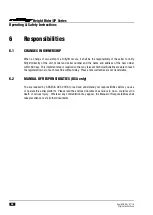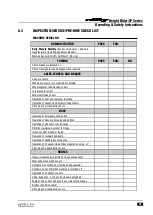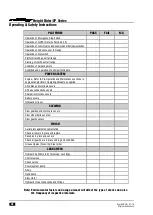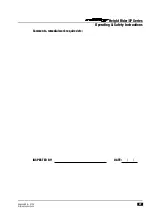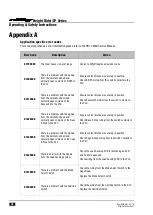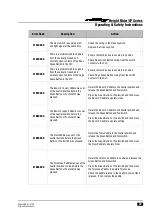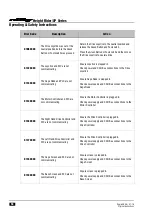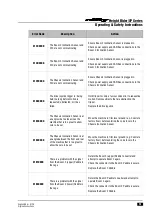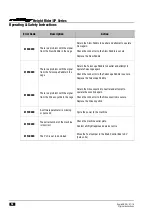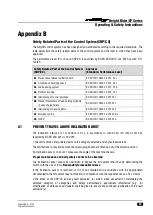
Height Rider/SP Series
Operating & Safety Instructions
English/USA – 01/18
Original instructions
58
A3
LOAD SENSING SYSTEM
The Load sensing system is PL d in accordance to with BS EN ISO 13849-1:2015 as required by BS
EN 280:2013+A1:2015
1. The limits of the safety-related parts to the category selected and any fault exclusions;
The load sensing system is always active. The sensing system is a two-channel device which takes
the input from a single load cell bridge on the cage load cell. The actual cage load is determined, and
in the case of an overload, the alarm will sound and the output signal is lost.
The loss of the output signal is converted into two separate signals, one of which is used to isolate
Channel 1 output (CWEN) and the other to isolate the Channel 2 output. (CWALM).
Proper
maintenance and daily safety checks to be observed.
On initial set-up the machine must be zero loaded to allow the ‘Tare’ function to register the no-load
condition. Following that a calibrated test load is put into the cage to set the upper limit. Proper
adherence to the zero set point and the correct test load must be taken to ensure the load sensing
system is working correctly. It is possible to apply the overload to the machine in the rest position, and
then only to detect this on the next application of the command signal. If the machine has been in the
elevated position the consequences of this would be more significant than if the machine were stowed.
Reasonably foreseeable misuse
2. The limits of the SRP/CS and any fault exclusion, for which, when essential for maintaining the
selected category or categories and safety performance, appropriate information (e.g. for
modification, maintenance and repair) shall be given to ensure the continued justification of the fault
exclusion(s);
Do not alter, modify or disable in any way the controls, safety devices, interlocks or any other part of
the machine.
Maintenance must only be carried on by appropriately trained and competent persons, who are
conversant with all modes of operation, speeds and characteristics of this model.
3. The effects of deviations from the specified performance on the safety function(s);
If the load sensing system does not function as intended it is possible that the Niftylift may encounter
overloads for which it is not rated.
If the Niftylift encounters loads beyond the rating as specified on the serial plate the product may occur
instability.
If the product becomes unstable, damage to the Niftylift, other equipment and properties, injury or loss
of life of the operator and surrounding persons may be a risk.
4. Clear descriptions of the interfaces to the SRP/CS and protective devices;
The load moment control system comprises of a primary device the “load sensor” and a PLC, and
motor controllers.
If the load sensing system cuts out, an alarm will sound and a clear indication of visual overload will be
given at each operating position. The system will not re-set until the overload has been removed, by
recommendation of reducing the overload in a safe manner.
Содержание HR 12
Страница 77: ......

